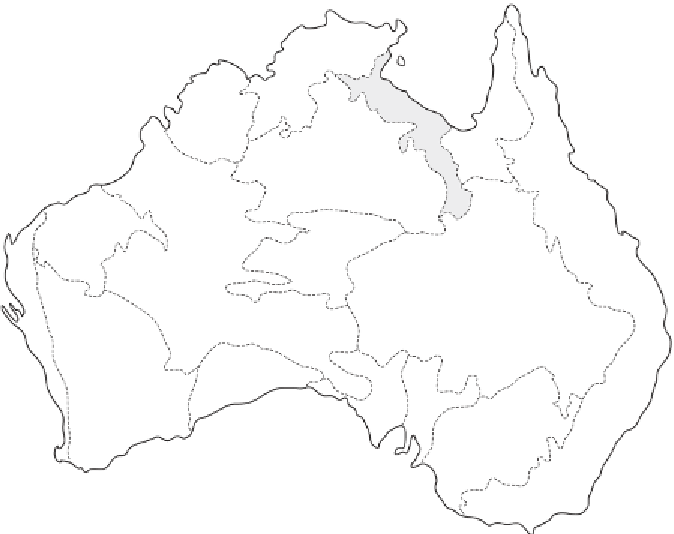Geoscience Reference
In-Depth Information
NORTH
PLATEAUX
AUSTRALIAN
CARPENTARIA
LOWLANDS
KIMBERLEY
LANDER-BARKLY
PLAINS
PILBARA
CENTRAL
AUSTRALIAN
RANGES
CENTRAL
SANDLAND
LOWLANDS
NULLARBOR
PLAIN
YILGARN
PLATEAU
EYRE
MURRAY
LOWLANDS
PA
500km
TASMANIAN
UPLANDS
110°E
116°E
122°E
128°E
134°E
140°E
146°E
152°E
Figure 22.2. Major regions of Australia. (Simplified from Jennings and Mabbutt,
1986
,
fig. 3.1
.)
can occur in both winter and summer. Rainfall variability in the eastern half of the
continent is strongly influenced by El Ni no-Southern Oscillation events (Allan,
1985
;
Whetton et al.,
1990
; Nicholls,
1992
; Simpson et al.,
1993a
; Simpson et al.,
1993b
;
Whetton and Rutherfurd,
1994
; Allan et al.,
1996
; Kotwicki and Allan,
1998
;Cai
et al.,
2001
; Cane,
2005
), as well as the North Pacific Oscillation/Pacific Decadal
Oscillation (Salinger et al.,
2001
; Mantua and Hare,
2002
; Pierce,
2002
), all of which
are discussed in
Chapter 23
.
Australia may be grouped into three broad climatic regions: the seasonally wet
tropics, the arid interior and semi-arid north-west, and the temperate southern zone
with mainly winter precipitation (
Figure 22.3
). The seasonally wet tropics occupy
the northern one-fifth of the continent and, like the seasonally wet tropics elsewhere,
such as the southern margin of the Sahara, have two pronounced seasons: a hot, wet

















